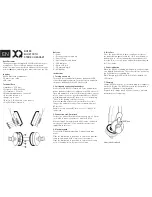
Motorola Confidential Proprietary
Manual Test Procedures
Level 3 Service Manual
3 - 9
Preliminary
Parameter
Low
Limit
High
Limit
Unit
GSM TX Power Out
31
33
dBm
DCS TX Power Out
28
29.5
dBm
PCS TX Power Out
28
29.5
dBm
Non-Signalling Test Procedures
(GSM/DCS/PCS)
To perform non-signalling test procedures, the user is
required to be familiarized with sending test commands
to the phone under test. The test commands can be
sent using the Handset test command interface or
through a computer. Please refer to section, ”Handset
Test commands,” for details on how to send test com-
mands through phone keypad entry.
In order to successfully send test commands to the phone
under test, the phone needs to be in suspend mode.
Follow the listed procedure to place the phone in sus-
pend mode.
Handset Test Commands
54 ok
Suspend
Radio Comm Test Commands
Click AT+MODE then SUSPEND (Serial Only)
Click PST Initialize and click SUS-
PEND when initialization is complete
(USB Only)
Hardware Requirements
Refer to page 3-2 for a list of Hardware. Refer to Fig-
ure 13 for a configuration illustration.
Software Requirements
Handset Test Command
•
No software needed
Computer Test Command
•
Radio Comm (latest release)
Verify TX Power Output (GSM/DCS/PCS)
Verify the TX Power output by initiating the commands
in this section. Verify that the results fall within the fol-
lowing limits.
Handset Test Commands
54
Suspend
10*0*10¹
WCDMA/GSM/DCS mode
20*38*0²
Set Channel 38
45*5³
Set GSM Power Level 5
7*6*1
Enable Carrier
¹10*0*5 for PCS mode
²20*700*0 for DCS Channel 700; 20*661*0 for PCS Channel 661
³45*0 for DCS/PCS Power level 0
Table 8. TX Power Limits
Non-Signalling Test Procedures (GSM/DCS/PCS)
















































